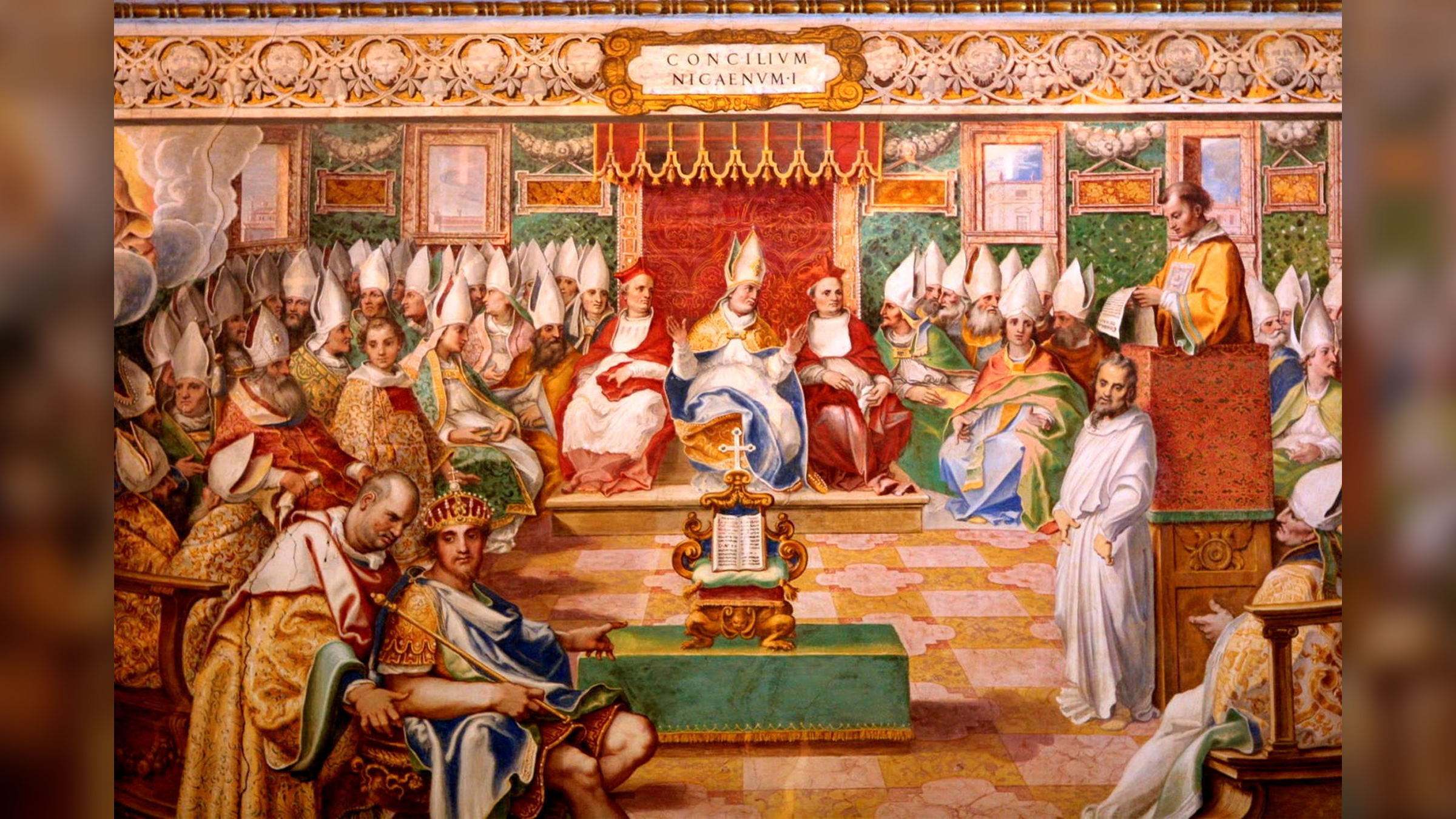Why does the date of Easter change every year?
Easter can fall on any Sunday between March 22 and April 25. The date took millennia to standardize for surprisingly complex reasons.

Why does Easter change every year, when dates like Christmas are fixed? The early church grappled with how Easter is determined, and the processes for scheduling the holiday weren't fully set in stone until the 16th century. On top of that, the dates of Easter used by most Western Christian churches don't match how most Eastern Christian churches determine the dates for the sacred day.
In the early days of Christianity, different groups of Christians celebrated Easter on different dates. All agreed that Jesus Christ was crucified and that Easter celebrated his resurrection a few days later. But early Christians in Asia Minor (now Turkey) observed the date of his crucifixion on the first day of the Jewish festival of Passover — "Pesach" in Hebrew — which celebrates the liberation of the Jewish people described in the biblical Book of Exodus after they escaped being slaves in Egypt.
According to the Jewish calendar, Passover now starts on 15 Nisan, but it was originally celebrated on 14 Nisan, which corresponds to the first full moon of spring. In Christianity, Jesus' last supper was a Passover meal that he shared with his disciples the night before his crucifixion.
In the West, however, early Christians observed the resurrection on the first day of the week following Passover — Easter Sunday — and held that the crucifixion had occurred two days earlier, on Good Friday. All the other Easter dates, including Palm Sunday — the Sunday before Easter that celebrates Jesus' arrival into Jerusalem — are based on Easter's changing date.
But this meant that early Western Christians celebrated Easter on the first Sunday after the 14th day of Nisan, which could be several days after early Eastern Christians celebrated it.
Related: Why is Christmas celebrated on Dec. 25?
Council of Nicaea

As the church grew stronger, certain disputes, like determining the dates of Easter, became hotly debated; and in A.D. 325 the First Council of Nicaea attempted to resolve them.
Sign up for the Live Science daily newsletter now
Get the world’s most fascinating discoveries delivered straight to your inbox.
This was an assembly of early church leaders who met in the Eastern Roman city of Nicaea (now İznik in western Turkey) in an effort to standardize what Christians believed. (A second Council of Nicaea was held in 787, but the first is the most important.)
According to Ken Dark, a professor of archaeology and history at King's College London, the first Council of Nicaea encoded Christian beliefs in the Nicene Creed, a version of which is still recited in Catholic and Orthodox church services today.
The council also attempted to resolve the disputes about the dates of Easter but with rather less success; a dispute between Roman and Celtic clergy in early England over the dates for Easter wasn't resolved until 664, in favor of the Western and Roman method.
"From the second century onwards, the calculation of the date of Easter was a controversy in the early church," Dark told Live Science. "Although the Council of Nicaea in 325 attempted to resolve this, the matter proved controversial for centuries."
Spring equinox
As well as standardizing the dates of Easter, the Council of Nicaea wanted to move its calculation away from the Jewish calendar, which was by that time seen as a relic from a different religion.
The council's solution was to tie its calculation to the vernal or spring equinox, which occurs each year on March 20 or March 21.
The formula determined by the Council of Nicaea is still used today: Easter Sunday should be observed on the first Sunday after the first full moon after the spring equinox — which now means Easter falls on any Sunday between March 22 and April 25.
The same formula is used by the Catholic Church (and most Protestant churches) and the Eastern Orthodox churches, but with the difference that these now use different calendars: The Catholic Church and most Protestants use the Gregorian calendar, a reform introduced by Pope Gregory XIII in 1582, but the Orthodox churches still use the Julian calendar, which was introduced by Julius Caesar in 46 B.C.
The result is that different dates for Easter are observed in different parts of the world, despite all of the efforts to standardize them.
Related: How much does the soul weigh?
No pagans
The Christian Easter celebration is sometimes said to have pagan origins and use pagan symbolism such as eggs and rabbits, but historians generally don't think it has pagan links.
"In the Germanic lands it may well have taken on attributes from a pagan spring festival, but we have very little evidence for that," Ronald Hutton, a professor of history at the University of Bristol in the U.K., told Live Science in an email.
Hutton noted that the eighth-century Anglo-Saxon scholar Bede wrote that his ancestors had named the month of April after the pagan goddess Eostre; and some suppose this is the origin of the term Easter. But Bede's remark is the only evidence for the claim, and Easter can also occur in March.
Meanwhile, "both Easter and Eostre might have been named from a root word signifying dawning or opening or spring, cognate to the Greek Eos," Hutton said. "Certainly there seems to be no trace of an ancient pagan festival in northern Europe that fell between mid-March and mid-April."
Tom Metcalfe is a freelance journalist and regular Live Science contributor who is based in London in the United Kingdom. Tom writes mainly about science, space, archaeology, the Earth and the oceans. He has also written for the BBC, NBC News, National Geographic, Scientific American, Air & Space, and many others.
Science news this week: Controversy around the dire wolf 'de-extinctions' and a 3D hologram breakthrough
Scientists built largest brain 'connectome' to date by having a lab mouse watch 'The Matrix' and 'Star Wars'
Archaeologists may have discovered the birthplace of Alexander the Great's grandmother










